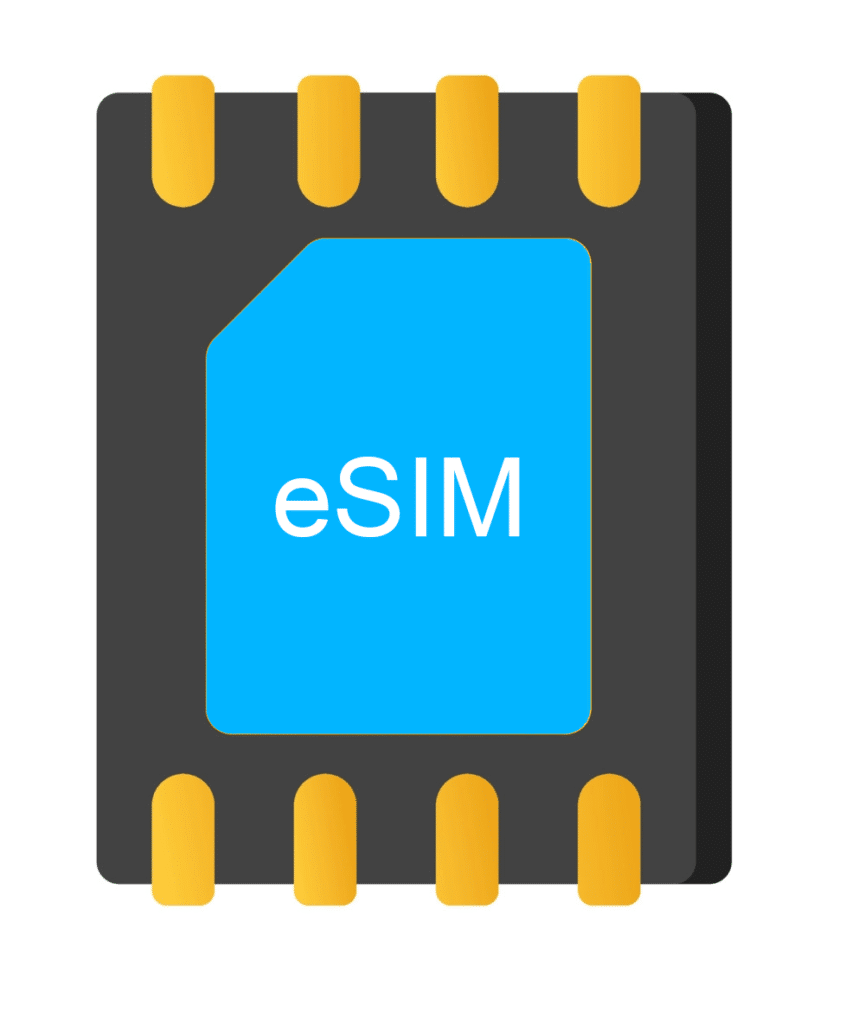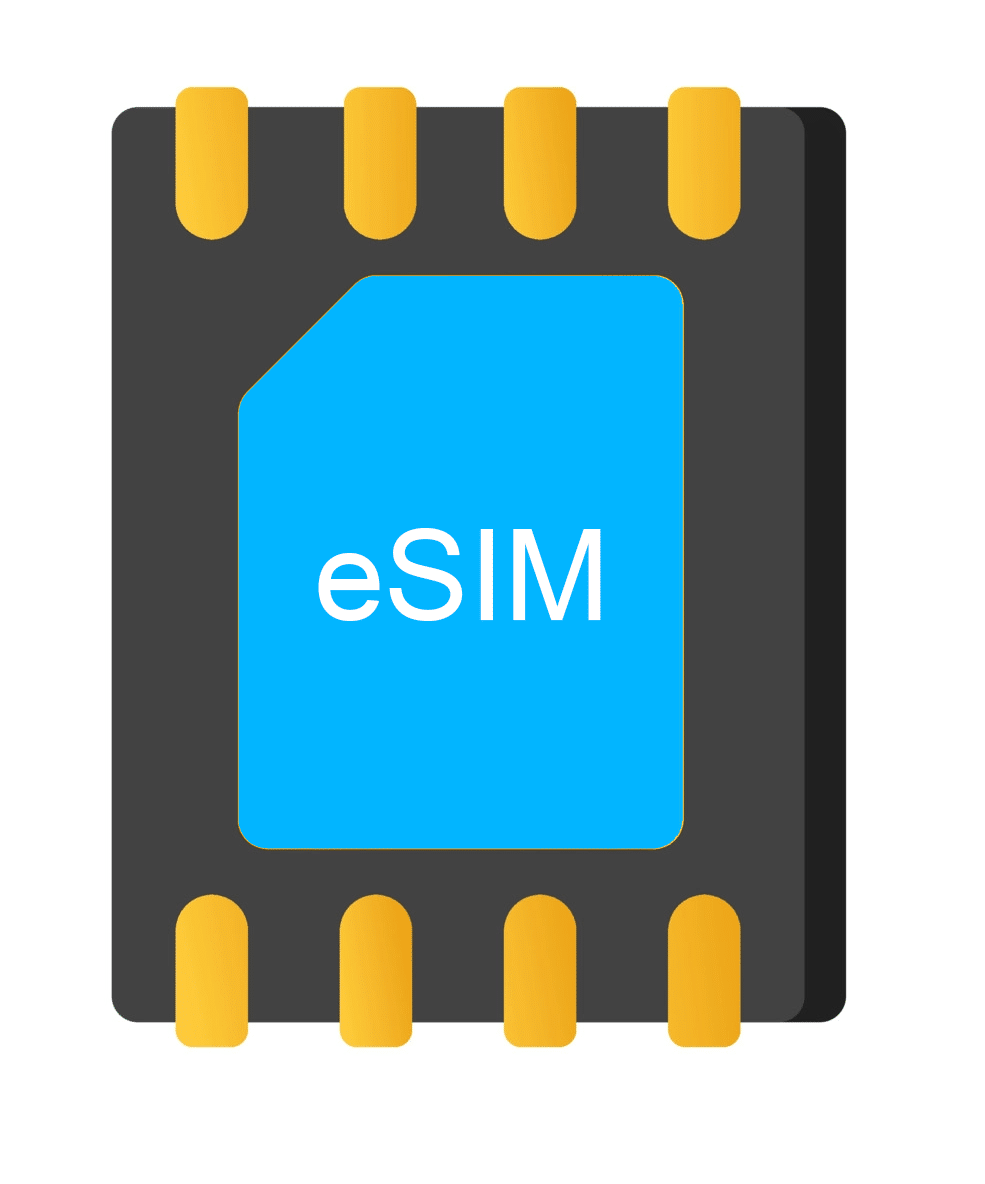The latest in mobile tech to finally reach the mainstream is the new eSIM. An eSIM (Embedded SIM) is a type of SIM card that is embedded within a device, allowing the user to activate a mobile service plan without having to physically exchange the SIM card. Unlike traditional physical SIM cards, an eSIM is a virtual card that can be programmed to a device over-the-air (OTA). This means that a user can change their mobile service provider or plan without having to physically remove the SIM card from the device.
eSIM technology has been around for a few years and is becoming increasingly popular due to its flexibility and convenience. With an eSIM, you can activate a new service plan or switch between service providers without having to visit a store or wait for a physical SIM card to arrive in the mail. Additionally, eSIM technology can simplify the process of setting up a new device, as you can activate the service plan directly from the device, without having to worry about physically inserting a SIM card.
eSIMs are used in a variety of devices, including smartphones, laptops, tablets, smartwatches, and IoT devices. They are typically embedded into the device at the time of manufacture and are designed to work with a specific device model. This is because the eSIM is programmed with specific software and firmware that are required to work with the device’s hardware.

The eSIM technology is based on the same basic principles as traditional SIM cards, but it operates differently. A traditional SIM card contains a unique identifier called an ICCID (Integrated Circuit Card Identifier) that is used to authenticate the device with the service provider. An eSIM, on the other hand, does not have a physical ICCID. Instead, it contains a secure digital certificate that is used to authenticate the device with the service provider.
The process of setting up an eSIM is typically straightforward and easy to do. The user simply needs to download a profile from their service provider, which is then installed on the device. This profile contains all the necessary information required to activate the service plan, including the ICCID, phone number, and other details. The user can then activate the service plan and start using their device as they normally would.
One of the benefits of using an eSIM is the ability to switch between service providers or plans with ease. For example, if a user is travelling abroad and wants to take advantage of a local service plan, they can simply download a new profile from the local service provider and activate the new plan on their device. This eliminates the need to purchase and physically swap SIM cards, which can be a time-consuming and expensive process.
Another benefit of eSIM technology is its use in IoT (Internet of Things) devices. IoT devices typically require a mobile service plan to function, but traditional physical SIM cards are often too big and bulky for these devices. eSIM technology allows these devices to be much smaller and more compact, as they do not require a physical SIM card to be inserted. This makes eSIMs a great option for IoT devices, as they allow these devices to be more compact and convenient to use.
In conclusion, eSIM technology is a modern and flexible solution that offers many benefits over traditional physical SIM cards. With the ability to activate and switch between service plans without the need for a physical SIM card, eSIMs provide users with greater convenience and flexibility. Additionally, their use in IoT devices has revolutionized the way these devices can be designed and used, making eSIMs a key technology in the IoT space.
Bermuda finally has eSIM available now, since the main phone manufacturers (Apple and Samsung) are now including these by default. In fact, the US model of the Apple iPhone 14 Plus, only has eSIM. (Other countries still have a physical SIM)
If you are a global traveler, many of the major mobile service providers around the world offer eSIM plans for consumers and businesses. Some of the companies that offer eSIM plans include:
AT&T – AT&T offers eSIM plans for its customers in the United States, allowing them to switch between plans and service providers without the need for a physical SIM card.
Verizon – Verizon offers eSIM plans for its customers in the United States, giving them the ability to activate a new plan or switch between plans with ease.
T-Mobile – T-Mobile offers eSIM plans for its customers in the United States, allowing them to activate a new plan or switch between plans without having to physically change the SIM card.
Orange – Orange, a leading mobile service provider in Europe, offers eSIM plans for its customers in several countries, including France, Spain, and Belgium.
Vodafone – Vodafone, one of the largest mobile service providers in the world, offers eSIM plans for its customers in several countries, including the United Kingdom, Germany, and Italy.
Airtel – Airtel, a leading mobile service provider in India, offers eSIM plans for its customers, giving them the ability to activate a new plan or switch between plans without the need for a physical SIM card.
China Mobile – China Mobile, one of the largest mobile service providers in China, offers eSIM plans for its customers, giving them the ability to switch between plans and service providers without the need for a physical SIM card.
Singtel – Singtel, a leading mobile service provider in Asia, offers eSIM plans for its customers in several countries, including Singapore and Australia.
These are just a few examples of companies that offer eSIM plans. The availability of eSIM plans may vary by region and may depend on the device being used. It’s always best to check with your local service provider for more information on the eSIM plans they offer.
Here are the links to OneComm and Digicel Bermuda eSIM info pages:
https://onecomm.bm/introducing-esim/
https://support-bm.digicelgroup.com/hc/en-us/articles/9970948223373-Digicel-eSIM

